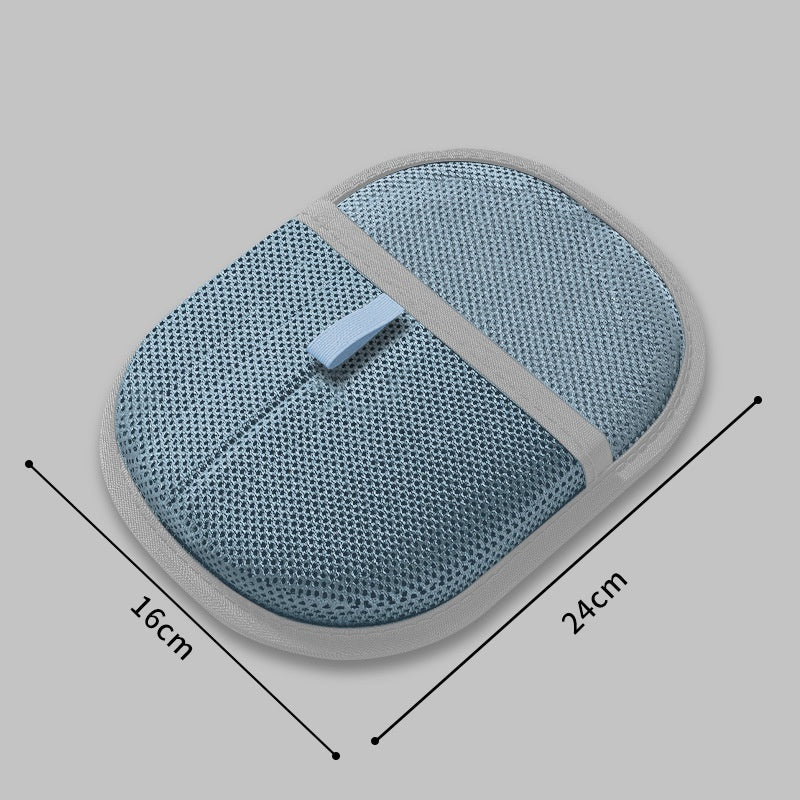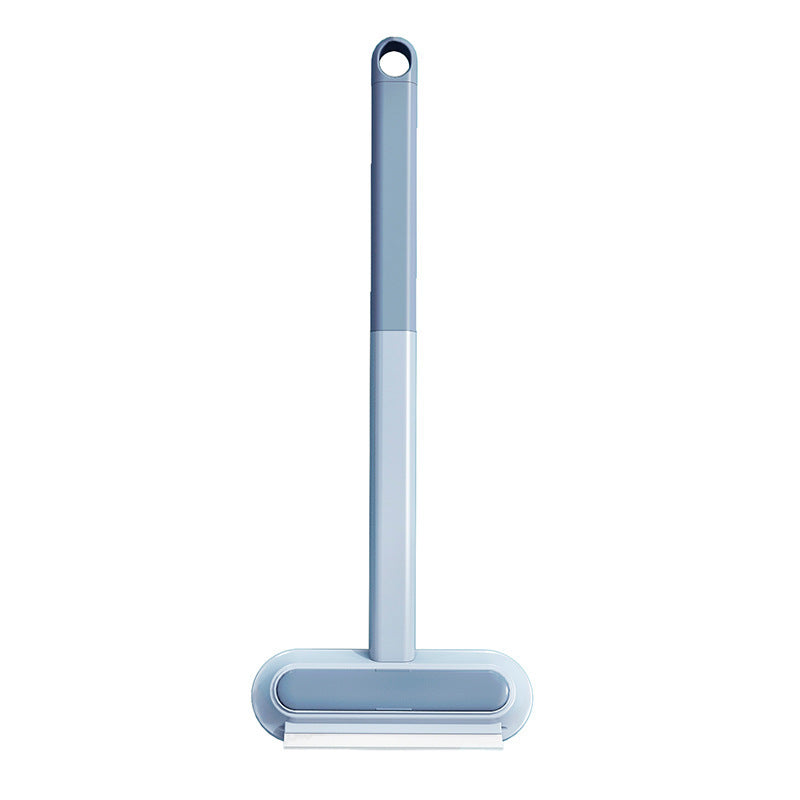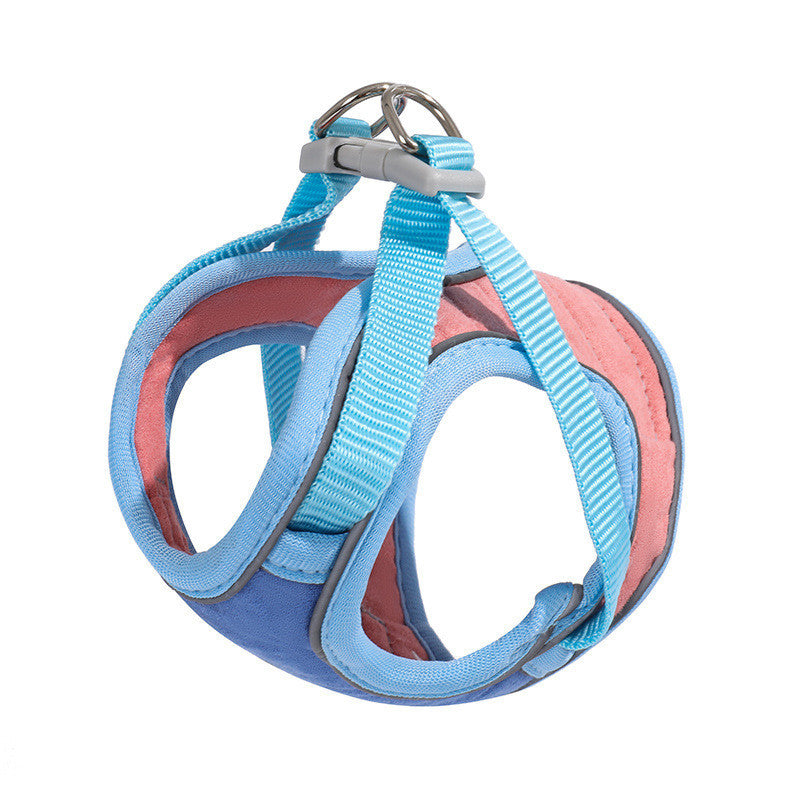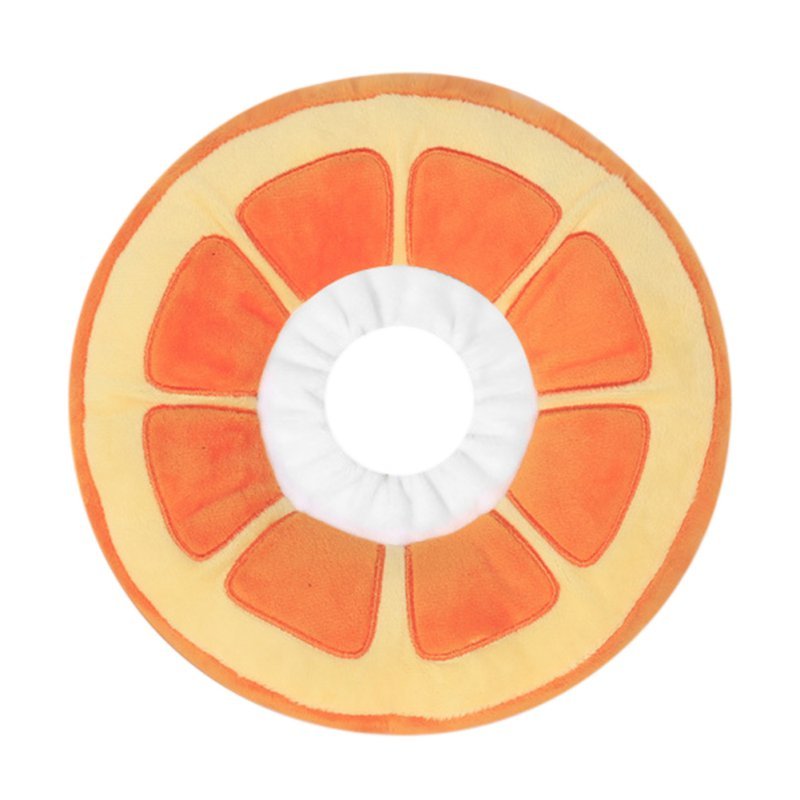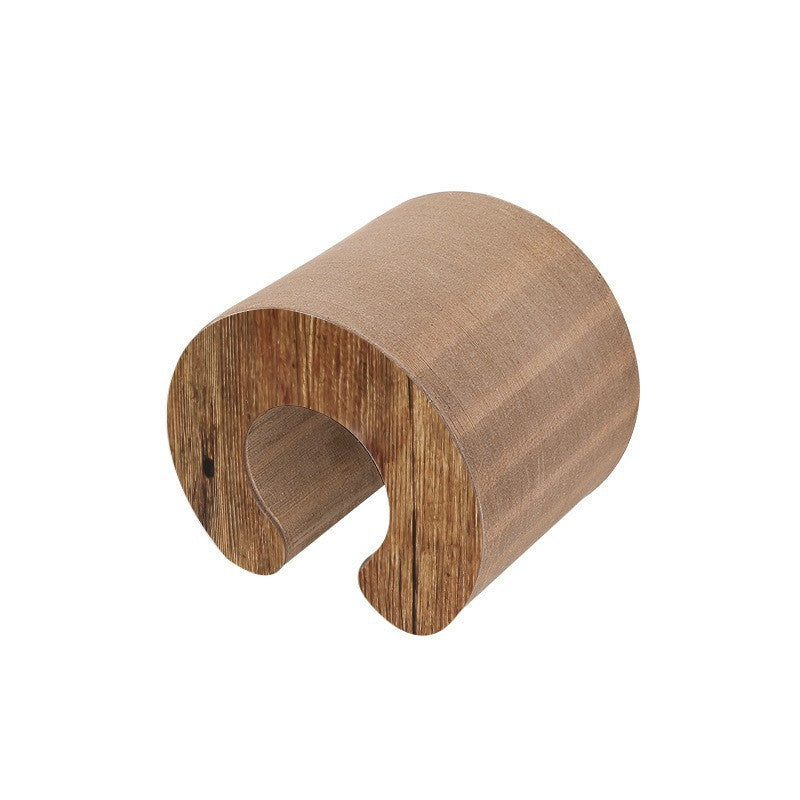Help your cat feel calm and secure in their environment by understanding the complex world of feline anxiety and stress management.
Anxiety is far more common among cats than many owners realise, often triggered by seemingly minor changes in routine, environmental factors, or social dynamics that can profoundly impact your cat's quality of life.
While cats are renowned for their independent nature and stoic demeanour, they are actually highly sensitive creatures who can experience significant stress that affects both their physical health and emotional wellbeing.
The challenge lies in recognising the often subtle signs of anxiety, as cats are masters at hiding their distress—an evolutionary survival mechanism that can make it difficult for even attentive owners to identify when their feline companion is struggling.
Understanding what causes anxiety in cats, learning to recognise the early warning signs, and implementing effective management strategies is absolutely crucial for maintaining your cat's happiness, health, and overall quality of life. Let's explore the intricate world of feline psychology and discover comprehensive approaches to creating a serene, secure environment where your cat can thrive emotionally and physically.
The Complex Nature of Feline Anxiety
Cat anxiety is a multifaceted condition that encompasses both psychological and physiological responses to perceived threats or stressors. Unlike humans, cats cannot rationalise their fears or communicate their concerns verbally, making it essential for owners to become skilled observers of feline behaviour and body language.- Understanding the Feline Stress Response: Cats evolved as both predators and prey animals, creating a complex psychological profile that remains hypervigilant to potential threats. Their stress response system is finely tuned to detect changes in their environment, social structure, or routine that might indicate danger. When this system becomes overactive or fails to return to baseline, chronic anxiety develops.
- The Impact of Domestication: While domestication has provided cats with security and comfort, it has also created new stressors that their wild ancestors never encountered. Modern domestic cats must navigate human schedules, multi-pet households, confined spaces, and artificial environments that can sometimes conflict with their natural instincts and needs.
Comprehensive Understanding of Anxiety Triggers
Cats are creatures of habit whose sense of security depends heavily on predictability and environmental stability. Even seemingly insignificant changes can upset their carefully maintained equilibrium and trigger anxiety responses.Environmental Triggers:
- Home Relocations: Moving to a new residence represents one of the most significant stressors, as cats lose their familiar territory, scent markers, and established safe spaces
- Household Changes: Renovations, furniture rearrangement, or new decorating can disrupt established territorial boundaries and comfort zones
- Weather Events: Thunderstorms, heavy rain, strong winds, or barometric pressure changes can trigger anxiety in sensitive cats
- Neighbourhood Disruptions: Construction noise, new neighbours, or changes in outdoor cat populations can affect indoor cats who monitor their territory through windows
Social Triggers:
- New Family Members: Whether human babies, children, adults, or other pets, additions to the household represent significant social restructuring
- Visitor Stress: Unknown people in the home can trigger territorial anxiety and social stress
- Owner Schedule Changes: Alterations in work patterns, travel, or daily routines can disrupt the cat's sense of security and predictability
- Loss and Grief: The death or departure of bonded family members (human or animal) can cause profound grief and anxiety
Sensory Triggers:
- Auditory Stressors: Fireworks, loud music, appliance noises, or sudden unexpected sounds can trigger startle responses and ongoing anxiety
- Olfactory Changes: New cleaning products, air fresheners, or unfamiliar scents can create stress in cats who rely heavily on scent for environmental assessment
- Visual Disturbances: New outdoor activities visible through windows, such as wildlife or neighbourhood changes, can create ongoing vigilance and stress
Medical and Physical Triggers:
- Health Issues: Pain, illness, or discomfort can increase anxiety levels and create negative associations with previously comfortable activities or locations
- Aging Changes: Senior cats may develop anxiety as their senses decline or cognitive changes occur
- Medication Side Effects: Some treatments can affect mood and anxiety levels as unintended consequences
According to RSPCA Australia, anxiety can manifest in numerous ways and requires careful, ongoing observation to identify and address effectively. The organisation emphasises that anxiety is a legitimate medical and behavioural concern that deserves professional attention and compassionate management.
Recognising the Signs: A Detailed Behavioural Analysis
Identifying anxiety in cats requires understanding both obvious and subtle behavioural changes. Cats often begin showing anxiety through minor alterations in routine before progressing to more obvious symptoms if the underlying stressors aren't addressed.Physical and Grooming Changes:
- Excessive Grooming: Over-grooming leading to bald patches, skin irritation, or hairball problems, often focused on legs, belly, or other easily accessible areas
- Grooming Neglect: Conversely, some anxious cats stop grooming altogether, leading to matted fur, poor coat condition, or an unkempt appearance
- Physical Tension: Muscle tension, hunched posture, or difficulty settling into comfortable positions
- Trembling or Shaking: Visible physical manifestations of anxiety, particularly during stressful events or in anticipation of them
Appetite and Eating Behaviour:
- Complete Food Refusal: Loss of interest in favourite foods, treats, or normal meals during stressful periods
- Stress Eating: Sudden increases in food consumption or frantic eating behaviours as a coping mechanism
- Location Sensitivity: Refusing to eat in their normal location but accepting food in hidden or alternative areas
- Texture or Brand Sensitivity: Suddenly rejecting previously accepted foods due to heightened sensitivity during anxious periods
Spatial and Territorial Behaviours:
- Increased Hiding: Seeking refuge in closets, under furniture, in boxes, or other secluded locations for extended periods
- Territory Abandonment: Avoiding previously favourite spots, rooms, or areas of the home
- Hypervigilance: Constant alertness, difficulty relaxing, or positioning themselves to monitor potential threats
- Escape Attempts: Trying to access new hiding spots or attempting to leave the house or room
Social and Communication Changes:
- Vocalisation Patterns: Increased crying, yowling, chattering, or conversely, unusual silence in normally vocal cats
- Attention-Seeking: Excessive demand for attention, following owners constantly, or refusing to be alone
- Social Withdrawal: Avoiding human interaction, hiding when visitors arrive, or becoming less responsive to social cues
- Aggression Displays: Growling, hissing, swatting, or biting when approached or handled, even by trusted family members
Elimination and Litter Box Issues:
- Inappropriate Elimination: Urinating or defecating outside the litter box, often in significant locations like the owner's bed or near exits
- Litter Box Avoidance: Refusing to use the litter box entirely or showing obvious reluctance or anxiety when approaching it
- Marking Behaviours: Increased territorial marking, particularly in response to new stressors or environmental changes
- Changes in Elimination Habits: Alterations in frequency, timing, or location preferences for bathroom activities
- Comprehensive Anxiety Management Strategies
Successfully managing cat anxiety requires a multi-faceted approach that addresses both immediate symptoms and underlying causes whilst building long-term resilience and coping mechanisms.
1. Creating Ultimate Safe Spaces
Every anxious cat needs access to secure retreat areas where they can decompress and regain emotional equilibrium without interruption or pressure.Essential Safe Space Elements:
- Privacy and Enclosure: Covered cat beds, enclosed cat trees, or dedicated quiet rooms where your cat won't be disturbed
- Elevated Options: High perches that provide security through vertical territory and visual oversight of their environment
- Multiple Locations: Several safe spaces throughout your home so your cat always has nearby refuge options
- Personal Scent Items: Blankets, towels, or clothing items that carry familiar, comforting scents
- Resource Access: Nearby water, food, and litter facilities so anxious cats don't need to venture into stressful areas for basic needs
- Position safe spaces away from high-traffic areas and household noise
- Ensure adequate ventilation and temperature control for comfort
- Include soft, washable bedding that can be easily maintained
- Consider privacy screens or barriers that provide visual security whilst maintaining accessibility
- Rotate and refresh safe space amenities to maintain interest and comfort
2. Establishing Routine and Predictability
Consistent daily schedules provide anxious cats with the predictability they need to feel secure and anticipate positive experiences.Critical Routine Elements:
- Feeding Schedules: Regular meal times that your cat can anticipate and prepare for mentally
- Play Sessions: Structured interactive play that provides physical exercise and mental stimulation whilst building positive associations
- Grooming and Care: Consistent timing for necessary care activities like brushing, nail trimming, or medication administration
- Social Interaction: Predictable periods of human attention, cuddles, or companionship that your cat can rely upon
- Environmental Consistency: Maintaining familiar arrangements of furniture, resources, and territorial markers
- Use consistent verbal cues and signals to help your cat anticipate routine activities
- Maintain schedules even during weekends, holidays, or disruptions when possible
- Create backup routines for periods when normal schedules must be altered
- Involve all household members in maintaining consistency across different caregivers
- Document successful routines to ensure continuity during travel or emergencies
3. Advanced Environmental Enrichment
Mental stimulation and environmental complexity help anxious cats redirect nervous energy into positive activities whilst building confidence through successful experiences.Physical Enrichment Options:
- Puzzle Feeders: Interactive feeding devices that engage hunting instincts and provide mental challenges during meals
- Climbing Structures: Multi-level cat trees, wall-mounted shelves, or climbing towers that satisfy territorial and exercise needs
- Scratching Variety: Multiple scratching posts with different textures, angles, and locations throughout your home
- Hiding Opportunities: Cardboard boxes, paper bags, or commercial hiding spots that allow for natural concealment behaviours
Sensory Enrichment:
- Scent Exploration: Rotating toys scented with catnip, silvervine, or other appealing natural scents
- Visual Stimulation: Bird feeders outside windows, fish tanks, or cat television programming designed specifically for feline viewers
- Auditory Enrichment: Classical music, nature sounds, or specifically composed music for cats during stressful periods
- Texture Variety: Different surfaces for walking, scratching, and resting that provide sensory diversity
Interactive Enrichment:
- Training Sessions: Simple clicker training or trick learning that builds confidence and strengthens human-cat bonds
- Foraging Games: Hidden treats or kibble that encourage natural hunting and exploration behaviours
- Rotational Toys: Regularly changing available toys to maintain novelty and interest without overwhelming anxious cats
- Social Play: Structured interactive play sessions that build positive associations with human interaction
4. Therapeutic Calming Products
Modern anxiety management includes various products designed to provide natural calming effects through different sensory pathways.Pheromone Therapy:
- Feliway Diffusers: Synthetic facial pheromones that mimic the calming scents cats produce when they feel secure in their environment
- Pheromone Collars: Wearable options that provide continuous pheromone exposure during particularly stressful periods
- Pheromone Sprays: Targeted application to specific areas, carriers, or new items that might cause anxiety
- L-Theanine: Amino acids that promote relaxation without sedation
- Valerian Root: Natural herbal calming agents that many cats find soothing
- Probiotics: Gut health supplements that may influence mood and anxiety through the gut-brain connection
- Omega-3 Fatty Acids: Nutritional supplements that support overall neurological health and mood stability
- Calming Music: Specially composed music designed to reduce feline stress and promote relaxation
- Weighted Blankets: Gentle pressure therapy that can provide comfort for some anxious cats
- Aromatherapy: Pet-safe essential oil diffusers with calming scents like lavender or chamomile
- Calming Treats: Commercial treats formulated with natural calming ingredients
5. Gradual Desensitisation and Counter-Conditioning
For cats with specific anxiety triggers, systematic desensitisation can help reduce fear responses and build positive associations.Desensitisation Process:
- Identify Specific Triggers: Carefully document what specifically causes anxiety responses
- Create Trigger Hierarchies: Rank triggers from least to most anxiety-provoking to address systematically
- Controlled Exposure: Gradually introduce triggers at very low intensities whilst pairing with positive experiences
- Progress Monitoring: Track your cat's responses and adjust the programme based on their comfort levels
- Positive Associations: Pair anxiety triggers with favourite treats, play sessions, or other highly valued experiences
- Relaxation Training: Teach your cat to associate certain cues with calm, relaxed states
- Confidence Building: Create successful experiences that help your cat feel capable and secure
- Patience and Consistency: Allow adequate time for new associations to develop without rushing the process
6. Professional Veterinary Support
When anxiety significantly impacts your cat's quality of life, professional intervention may be necessary to develop comprehensive treatment plans.When to Seek Professional Help:
- Anxiety symptoms persist despite environmental and behavioural interventions
- Your cat shows extreme responses like complete food refusal, elimination problems, or aggressive behaviours
- Anxiety interferes with basic life functions like eating, sleeping, or social interaction
- You notice signs of self-harm through excessive grooming or other repetitive behaviours
- Behavioural Medications: Anti-anxiety medications that can provide relief whilst behavioural modifications are implemented
- Veterinary Behaviourists: Specialists who can design comprehensive behaviour modification programmes
- Alternative Therapies: Acupuncture, massage, or other complementary treatments that may support anxiety management
- Nutritional Counselling: Dietary modifications that support neurological health and mood stability
Special Considerations for Different Life Stages
Anxiety management strategies should be adapted to your cat's age, health status, and individual personality characteristics.
Kitten Anxiety:
- Socialisation Windows: Critical periods for positive exposure to various experiences, people, and environments
- Gentle Introduction: Slower, more patient approaches to new experiences and environmental changes
- Mother and Littermate Separation: Managing anxiety related to early life transitions and bonding disruptions
- Growth Adaptations: Adjusting strategies as kittens develop and their needs change
- Established Patterns: Working with ingrained behaviours and preferences whilst introducing beneficial changes
- Life Transitions: Managing anxiety during major life changes like moves, family additions, or routine disruptions
- Health Monitoring: Watching for medical conditions that might contribute to or result from chronic anxiety
- Long-term Management: Developing sustainable anxiety management routines that can be maintained over years
- Cognitive Changes: Adapting to age-related cognitive decline that may increase confusion and anxiety
- Physical Limitations: Modifying environments to accommodate reduced mobility, vision, or hearing
- Health Complications: Managing anxiety that may result from chronic pain, illness, or medication side effects
- Comfort Focus: Prioritising comfort and familiarity over training or major environmental changes
Building Long-Term Resilience
The ultimate goal of anxiety management is helping your cat develop coping mechanisms and resilience that will serve them throughout their lives.
Confidence Building Activities:
- Successful Experiences: Creating opportunities for your cat to succeed and feel capable
- Skill Development: Teaching new behaviours or tricks that provide mental stimulation and accomplishment
- Environmental Mastery: Helping your cat feel confident navigating and controlling their environment
- Social Success: Building positive associations with human interaction and handling
Stress Inoculation:
- Controlled Challenges: Introducing mild, manageable stressors that help build coping skills
- Recovery Practice: Teaching your cat how to recover from stressful experiences quickly and completely
- Adaptability Training: Gradually introducing variety and change in positive, controlled ways
- Emotional Regulation: Helping your cat learn to self-soothe and return to calm states independently
A calm cat is indeed a happy cat, and the investment in understanding and managing anxiety pays dividends in your cat's overall quality of life, longevity, and your shared relationship.
By comprehensively understanding the causes of anxiety, recognising early warning signs, and implementing evidence-based management strategies, you can create a peaceful, secure environment where your feline friend can thrive emotionally and physically.
Remember that anxiety management is typically an ongoing process rather than a quick fix, requiring patience, consistency, and sometimes professional support. Every cat is unique, and what works perfectly for one may need adaptation for another. The key is maintaining a compassionate, observant approach that prioritises your cat's individual needs and preferences whilst building a foundation of security and trust that will benefit them throughout their lives.
Frequently Asked Questions
Q: How can I tell the difference between normal cat behaviour and signs of anxiety?
A: The key is observing changes from your cat's normal baseline behaviour patterns. Normal cats have consistent routines around eating, sleeping, playing, and social interaction. Anxiety typically manifests as sudden or gradual changes in these established patterns such as a normally social cat beginning to hide, a good eater refusing food, or a calm cat becoming hypervigilant. Duration and intensity matter too; temporary changes during obvious stressors (like during thunderstorms) are normal, whilst persistent changes lasting days or weeks warrant attention. Document any changes in a journal to help identify patterns and triggers.
Q: Can cat anxiety be completely cured, or is it something that requires lifelong management?
A: The prognosis depends on the underlying causes and your cat's individual temperament. Situational anxiety caused by specific triggers (like moving house) often resolves completely once the cat adjusts to their new circumstances. However, cats with generalized anxiety disorders or those with genetic predispositions to anxiety typically require ongoing management rather than complete "cures." The good news is that with proper management, anxious cats can live completely normal, happy lives. Many owners find that their management routines become second nature, and their cats develop excellent coping skills over time.
Q: Should I ever punish my cat for anxious behaviours like inappropriate elimination or destructive scratching?
A: Never punish anxious behaviours, as this will invariably make the anxiety worse and can damage your relationship with your cat. Anxiety-driven behaviours are involuntary responses to stress, not deliberate misbehaviour. Punishment adds another stressor and can create negative associations with you, the environment, or specific activities. Instead, focus on addressing the underlying anxiety whilst redirecting the behaviour to appropriate outlets. For example, provide additional litter boxes in quiet locations for elimination issues, or offer appealing scratching posts for destructive scratching. Always pair management with positive reinforcement when your cat makes good choices.
Q: Are there natural remedies for cat anxiety that are safe and effective?
A: Several natural options can be helpful as part of a comprehensive anxiety management plan. Pheromone products like Feliway are generally very safe and effective for many cats. Some cats respond well to calming herbs like valerian root, chamomile, or passionflower, but these should always be used under veterinary guidance to ensure proper dosing and avoid interactions with other treatments. L-theanine and other amino acid supplements have shown promise for some cats. However, "natural" doesn't always mean safe. Never use human herbal remedies or essential oils without veterinary approval, as many are toxic to cats. Always consult your vet before starting any new supplements or treatments.
Q: What should I do if my normally gentle cat becomes aggressive due to anxiety?
A: Anxiety-related aggression requires careful, gentle handling to avoid escalating the situation and to keep everyone safe. Never confront or punish an anxious, aggressive cat, as this will increase their fear and potentially make them more defensive. Instead, give your cat space and time to calm down. Identify and remove or minimize the anxiety triggers if possible. Create safe retreat spaces where your cat can decompress without being disturbed. If aggression is severe, frequent, or escalating, seek professional help immediately from a veterinarian or certified cat behaviourist. They can help determine whether medication might be helpful while you work on behaviour modification strategies.
Q: How long does it typically take to see improvement in an anxious cat?
A: The timeline varies significantly depending on the cause, severity, and duration of the anxiety, as well as your cat's individual personality and the interventions used. For situational anxiety (like moving to a new home), you might see gradual improvement over 2-8 weeks as your cat adjusts. For more complex anxiety issues, meaningful improvement might take 2-6 months of consistent management. Some interventions like pheromone diffusers may show effects within days to weeks, whilst behaviour modification techniques often require months to fully take effect. Medications, when prescribed, typically begin showing effects within 2-6 weeks. The key is maintaining consistent management and being patient with the process. Rushing often sets back progress.
Q: Can multiple cats in the same household have different anxiety levels and require different management approaches?
A: Absolutely! Each cat is an individual with their own personality, experiences, and stress triggers. In multi-cat households, you might have one confident cat who adapts easily to changes alongside an anxious cat who struggles with minor disruptions. This can actually complicate management, as interventions that help one cat might not affect or could even stress another. You'll need to observe each cat individually and potentially implement different strategies for different cats. For example, one cat might benefit from pheromone diffusers whilst another needs more hiding spots, and a third thrives with increased interactive play. Sometimes anxious cats in multi-cat homes benefit from temporary separation during particularly stressful periods to reduce competition and social pressure.
























